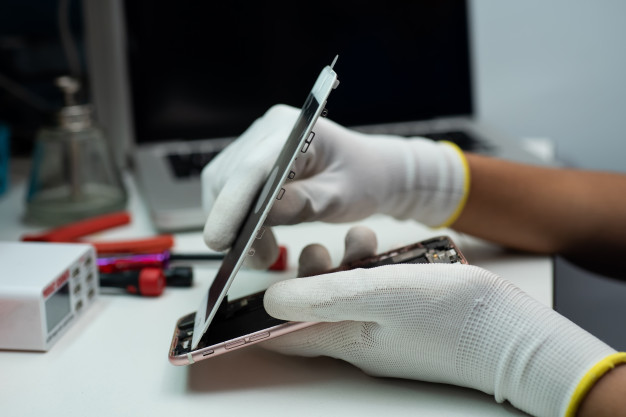Essential Steps to Kickstart Your Mobile App Development Project

Starting a mobile app development project can be an exciting endeavor, but it also requires careful planning and execution. Whether you’re developing an app for iOS, Android, or both platforms, here are essential steps to kickstart your mobile app development project:
1. Characterize Your App Thought and Objectives :
Start by clearly defining your app idea and objectives. What issue does your app tackle, and who is your target audience? Conduct market research to identify your app’s potential users and competitors. Having a well-defined concept is crucial for guiding the entire development process.
2. Create a Detailed Project Plan :
Develop a project plan that outlines the scope, timeline, and budget for your mobile app. Consider the features and functionality you want to include, and prioritize them based on their importance and complexity. A well-structured plan helps you stay on track and ensures that your project remains within budget and on schedule.
3. Choose the Right Development Approach :
You have several development approaches to choose from, including native app development, cross-platform development, and hybrid app development. The choice will depend on your target platforms, budget, and development speed. Native apps offer the best performance and user experience but can be costlier and more time-consuming. Cross-platform and hybrid approaches can be more cost-effective but may sacrifice some performance and platform-specific features.
4. Select Your Tech Stack :
Depending on your development approach, you’ll need to select the appropriate technology stack. For native iOS development, you’ll use Swift or Objective-C, while for native Android development, you’ll use Java or Kotlin. Cross-platform development often involves frameworks like React Native, Flutter, or Xamarin. Ensure your development team is proficient in the chosen technology stack.
5. Build a Skilled Development Team :
Your development team is crucial to the success of your project. Hire experienced mobile app developers, UI/UX designers, and quality assurance testers. Consider whether you want to bring in-house talent or outsource the development to a specialized agency. Choose team members who have a track record of delivering high-quality mobile apps.
6. Create Wireframes and Prototypes :
Before diving into actual development, design the app’s user interface (UI) and user experience (UX). Start with wireframes and prototypes to visualize how the app will look and function. This step helps you identify potential design issues early in the process, saving time and resources down the line.
7. Develop a Minimum Viable Product (MVP) :
Instead of building a full-featured app from the start, consider developing an MVP. An MVP is a stripped-down version of your app that includes the core features necessary to address your users’ primary pain points. This approach allows you to get your app into the hands of users quickly, gather feedback, and make iterative improvements.
8. Center around Security and Data Privacy :
Security is paramount in mobile app development. Implement security best practices, such as data encryption, secure authentication, and protection against common vulnerabilities. Additionally, ensure that your app complies with data privacy regulations, such as GDPR or CCPA, by securing user data and obtaining necessary consents.
Importantly, you can connect with check Mobile app development company in India in order to know more
9. Testing and Quality Assurance :
Rigorous testing is essential to ensure that your app functions correctly and is free from bugs and usability issues. Perform unit testing, joining testing, and user acceptance testing (UAT). Consider beta testing with real users to gather valuable feedback and identify any issues that may have been missed.
10. Optimize for Performance :
Mobile users have high expectations for app performance. Optimize your app for speed and responsiveness. Minimize loading times, reduce memory usage, and ensure smooth user interactions. Regularly test your app on a variety of devices to catch any performance bottlenecks.
11. Prepare for App Store Submission :
If you plan to release your app on platforms like the Apple App Store or Google Play Store, you’ll need to adhere to their guidelines and submission requirements. Prepare every single fundamental resource, including app symbols, screen captures, and special materials. Test your app thoroughly to ensure it meets platform-specific guidelines.
12. Market and Launch Your App :
Develop a marketing and launch plan to create buzz around your app. Utilize social media, email marketing, and app store optimization (ASO) techniques to improve your app’s visibility. Consider creating a website or landing page to promote your app and gather user information.
13. Gather User Feedback and Iterate :
After your app is live, continue to gather user feedback and monitor its performance. Use examination devices to acquire experiences into client conduct and inclinations. Regularly release updates to address issues, add new features, and keep your app competitive.
14. Support and Maintenance :
A mobile app project doesn’t end at launch. You’ll need to provide ongoing support and maintenance to ensure the app runs smoothly, remains secure, and stays up to date with platform changes and new devices. Address user inquiries and issues promptly to maintain a positive user experience.
15. Monetization Strategy :
Consider your app’s monetization strategy, whether it involves in-app advertising, subscription models, one-time purchases, or a combination of these. Carefully choose a strategy that aligns with your app’s purpose and target audience.
Starting a mobile app development project is a complex undertaking, but following these essential steps can help you navigate the process and increase your chances of success. Keep in mind that the mobile app industry is highly competitive, and ongoing innovation and improvement are key to staying ahead in this ever-evolving field.




